Bathroom sinks may seem fairly easy to choose. After all, many vanities come with a sink already on it, right? And you’re not using it for heavy-duty food prep or dishwashing, so you don’t need to consider their versatility.
Those are valid points, but choosing a bathroom sink is more complicated than you’d think. There’s shape, mount, size, color, and even material to consider; it has to fit in your bathroom and complement your decor. Don’t panic, though – just follow our guide to make an informed decision.
Today we’ll address the practical qualities to consider when choosing a sink; in Part II we will discuss the more fun aspects (such as materials and shapes).
The first factor to consider is the mount or installation type. There are several basic sink configurations:
Floor mount
Generally a good choice for smaller bathrooms, a pedestal sink is a single entity – a sink perched atop a pedestal, or a freestanding basin. Freestanding sinks are often used as a design statement and are practical in bathrooms with limited space. The downside to pedestal sinks is that they offer little to no storage space, so they are not recommended for bathrooms without appropriate cabinetry or countertop space.
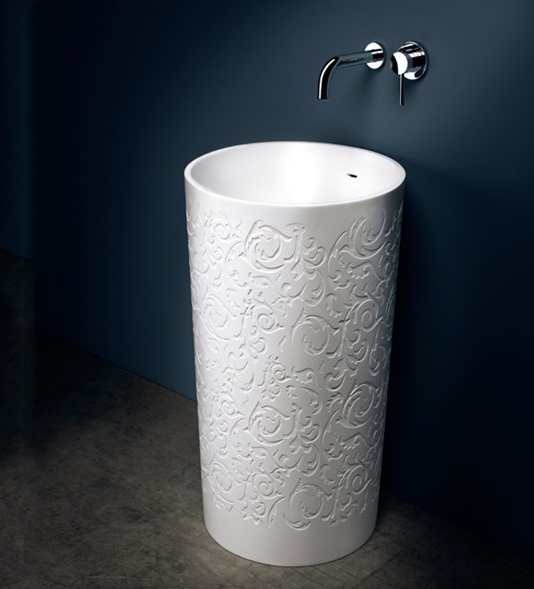
Be sure to consider other design elements when choosing a pedestal; a Victorian-style base will clash with a sleek, modern toilet.
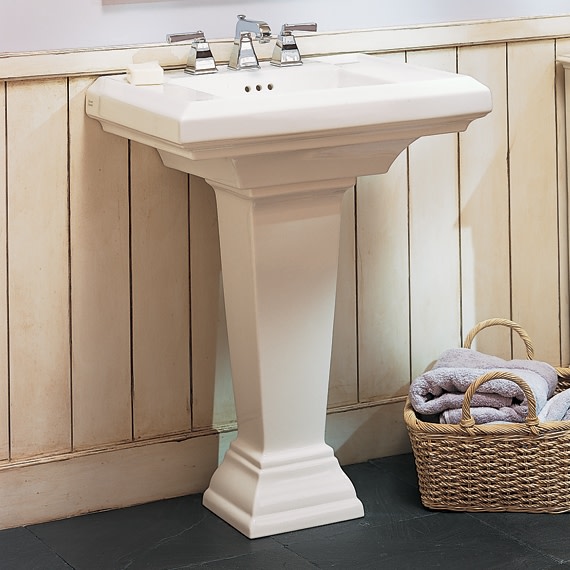
A wall-mounted sink is hung directly on an appropriately weight-bearing wall. They free up wall and floor space, making them an excellent choice for smaller and/or wheelchair-accessible bathrooms.
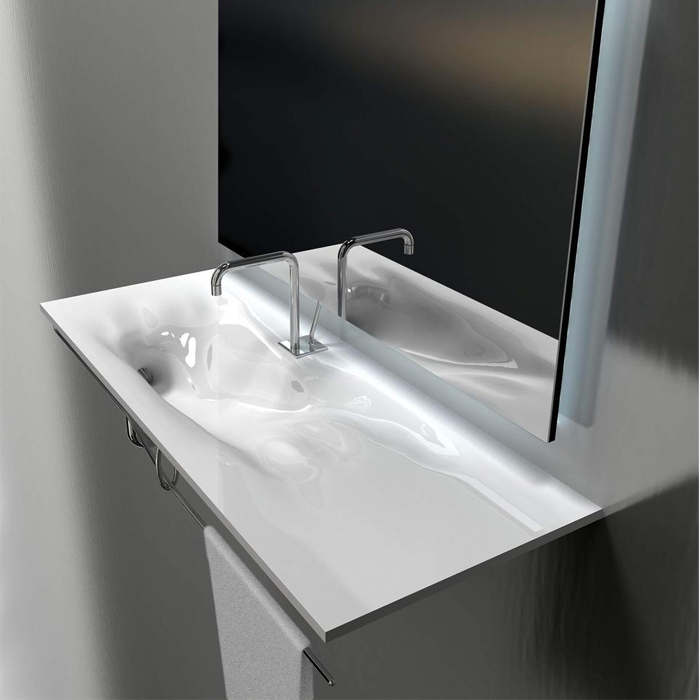
Console
A console is a cross between a wall-mounted sink and a pedestal. The sink extends from the wall and is supported by two or four legs. Consoles offer high style but, like pedestals, little storage space other than the occasional shelf.
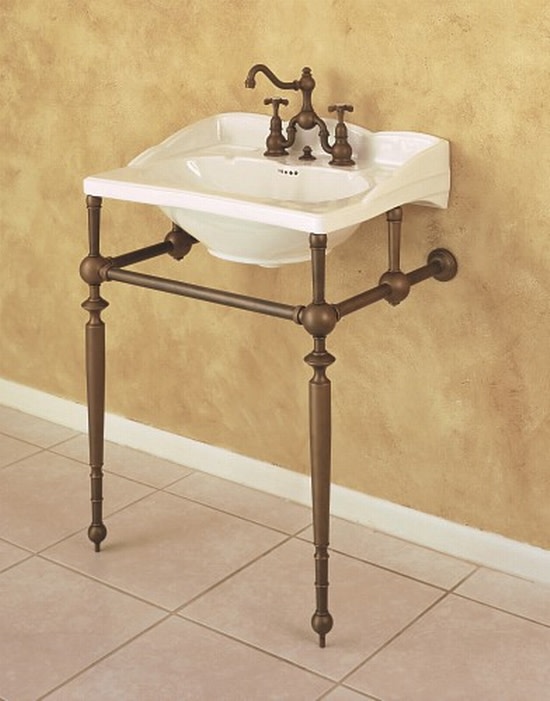
Counter mount
A counter mounted sink may be undermount, above counter (or vessel), drop-in, vanity-top, or semi-recessed.
Undermount sinks are mounted to the underside of the counter, emphasizing the counter rather than the sink. They are practical and easy to clean as they have no “lip” atop the counter and water may be squeegeed off of the counter and directly into the sink. Not every counter material can accommodate an undermount sink.
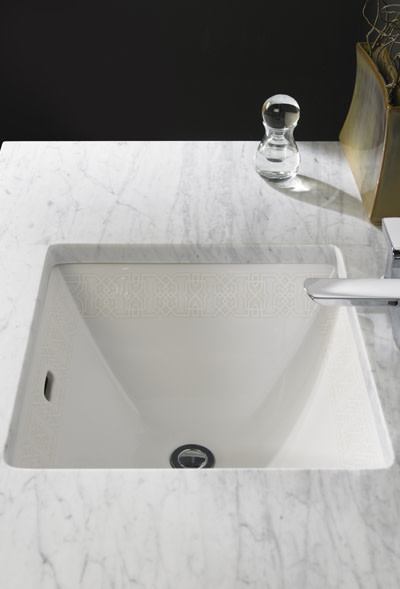
Above counter sinks sit atop the counter and are available in a vast array of shapes and sizes. They’re stylish and attractive but are more difficult to clean due to seams and hard-to-reach places (depending on the shape of the basin). Because the entire sink is on top of the counter, above counter sinks leave more space in the supporting cabinets or drawers. Be sure that the height of an above counter sink is appropriate for your vanity and bathroom.
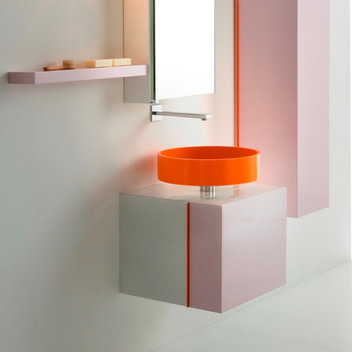
Drop-in sinks (also known as self-rimming sinks) are “dropped” in to a hole in the counter with a rim remaining on top of the counter. They’re the easiest to install but can be difficult to clean where the sink adjoins the countertop.
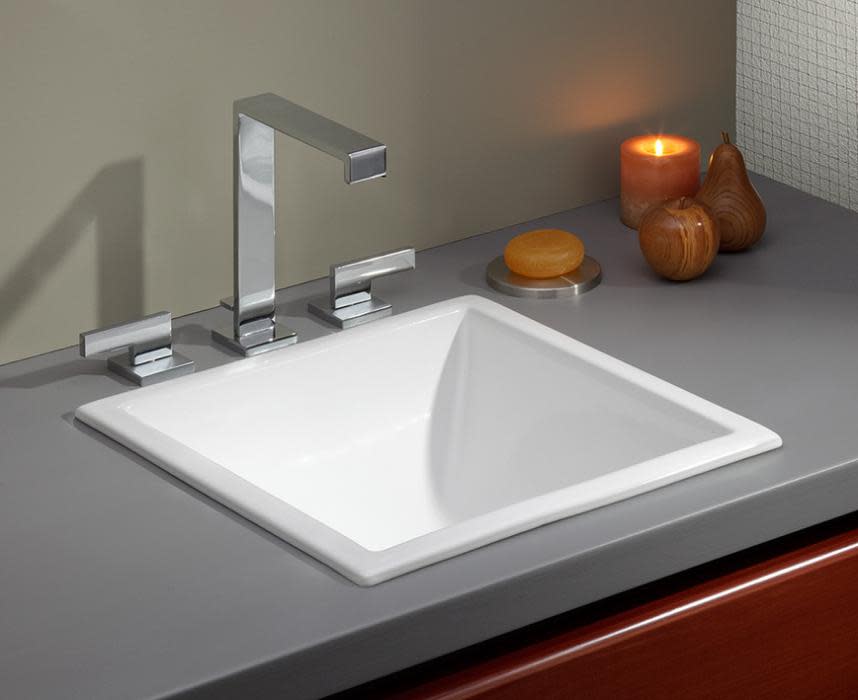
A semi-recessed sink is a drop-in/above counter hybrid, with part of the sink recessed and part above counter.
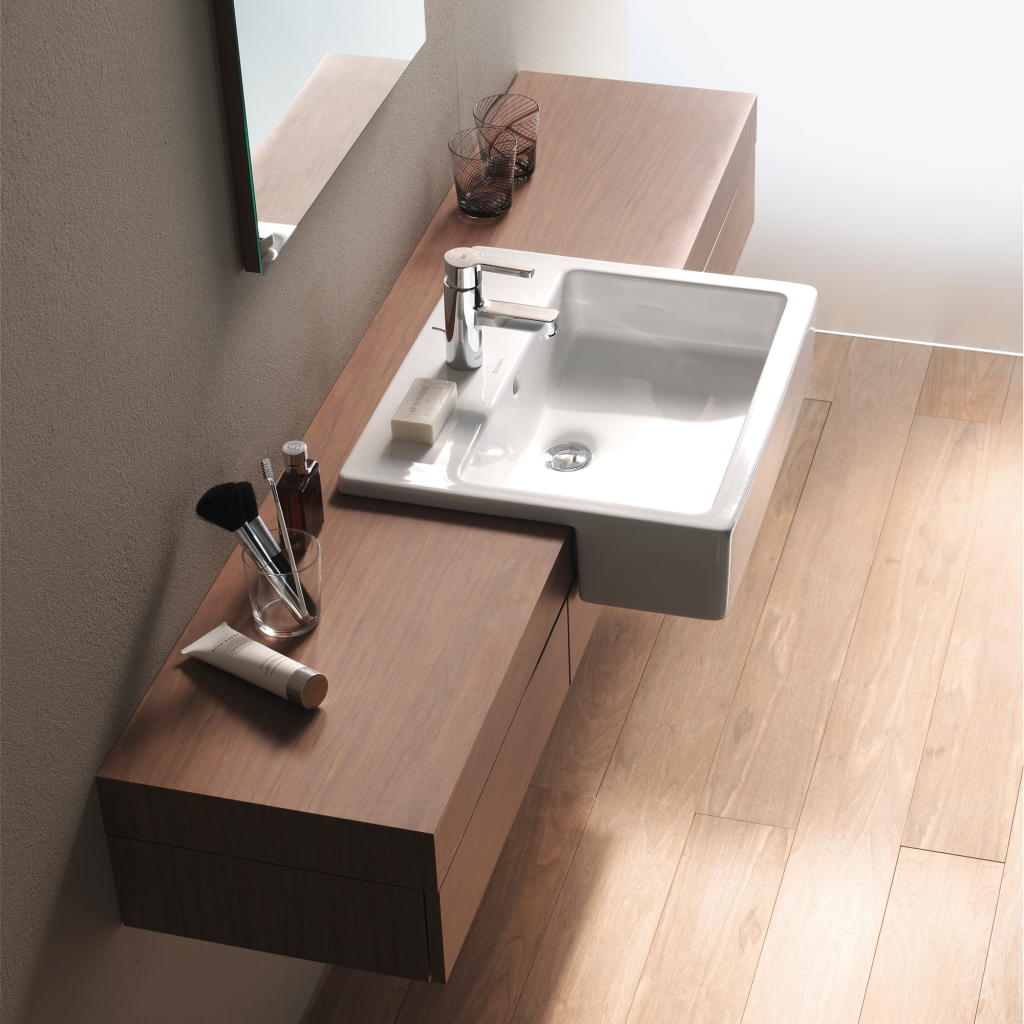
A vanity-top sink (or sinktop) fits atop the vanity, acting as both sink and counter in one piece. Because it is seamless, a vanity-top is easy to clean but the entire unit must be replaced in the event of damage.
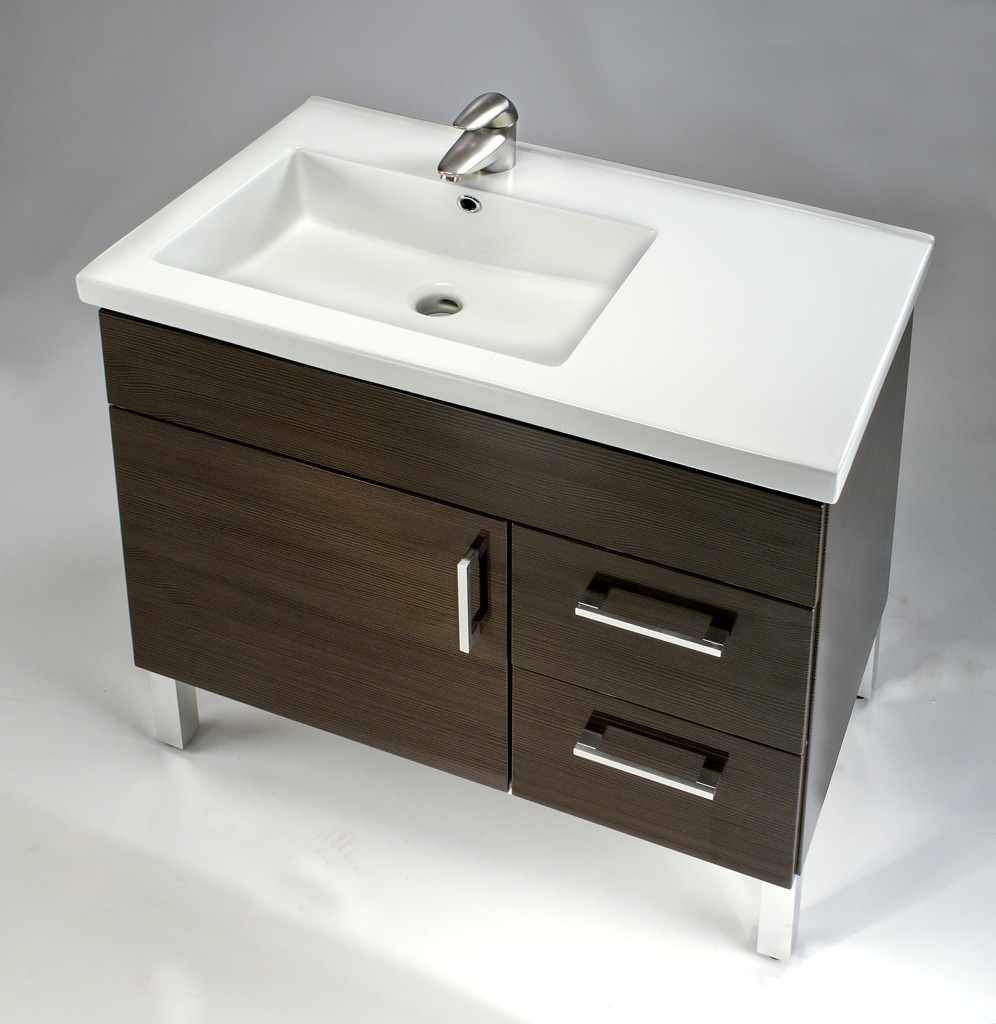
This decision should be intertwined with the next one, especially in space-challenged bathrooms.
Next (or simultaneously), figure out what size and height you want your sink to be. Consider the shape, size, and layout of your bathroom and vanity (if applicable) as well as your own height (and that of all sink users). Also take depth into consideration – deeper sinks minimize splashing. If you choose a sink with a countertop, ensure that it provides sufficient counter space for your needs.
There are not many “rules” of sink size, but there are some standards:
- in a standard 5’x7′ bathroom the sink should not exceed 24″ in width, according to Suzette Bonsignore of Smolka Plumbing NYC
- the center of the sink should be at least 12″ from the nearest wall for comfort
- standard sink height is 34″
Those are some of the most important decisions to make while choosing your sink. Stay tuned – Part II is coming soon!

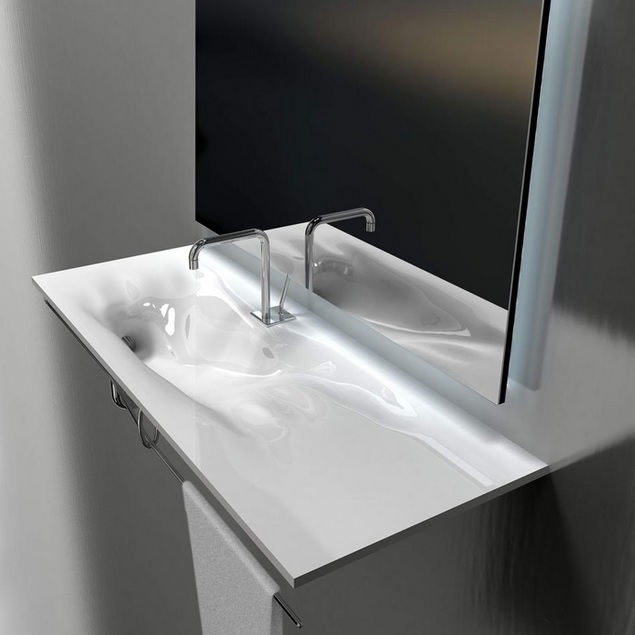

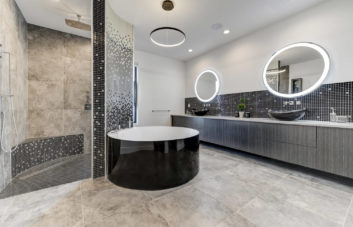

My wife has wanted to get our bathroom remodeled for some time now, and we were thinking about looking at different sinks. I really like the look of the above counter sinks. They just add a look that would be so nice in our current bathroom. Thanks for sharing.